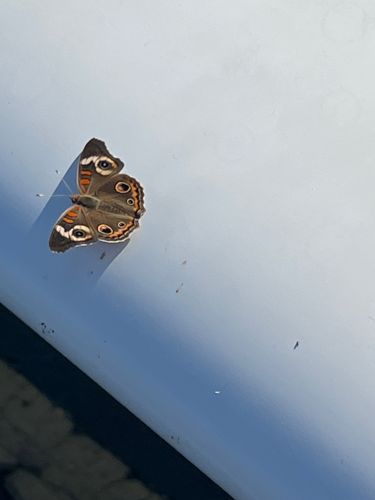Common Buckeye Butterfly
Scientific Name: Junonia coenia
Order & Family: Order: Lepidoptera, Family: Nymphalidae (Brush-footed butterflies)
Size: Wingspan typically ranges from 4 to 7 cm (1.6 to 2.8 inches).

Natural Habitat
Common Buckeye butterflies are commonly found in open, sunny areas with low vegetation, such as fields, meadows, pastures, agricultural areas, urban gardens, roadsides, and disturbed areas. They prefer habitats with abundant host plants for their larvae and nectar sources for adults.
Diet & Feeding
Adult Common Buckeyes primarily feed on nectar from a wide variety of flowers, including aster, chicory, knapweed, and daisy. Caterpillars are herbivorous, feeding on the leaves of host plants such as plantains (Plantago), snapdragons (Antirrhinum), toadflax (Linaria), and various members of the vervain and acanthus families.
Behavior Patterns
Common Buckeye butterflies are active during the day, flying low to the ground with an erratic, bouncy flight pattern. They often bask in the sun to warm themselves. Males perch and patrol for females. The caterpillars feed on host plants, and adults feed on nectar. They overwinter as adults in warmer climates, while in colder regions, they might migrate or have multiple broods throughout the warmer months.
Risks & Benefits
Common Buckeye butterflies pose no risks to humans. As pollinators, they benefit ecosystems by aiding in the reproduction of various flowering plants. Their caterpillars can be minor agricultural pests if host plants are cultivated crops, but generally, their impact is negligible. They are also part of the food web, serving as prey for birds and other insectivores.
Identified on: 8/29/2025